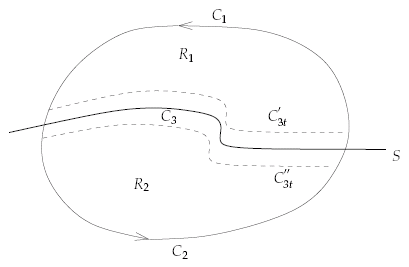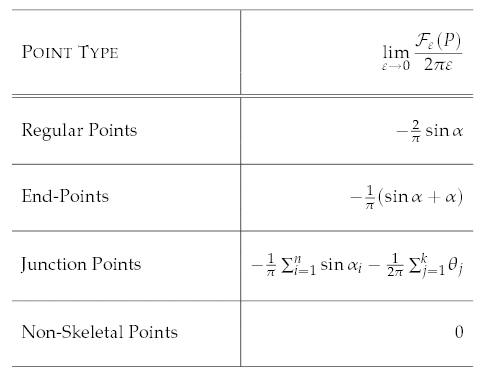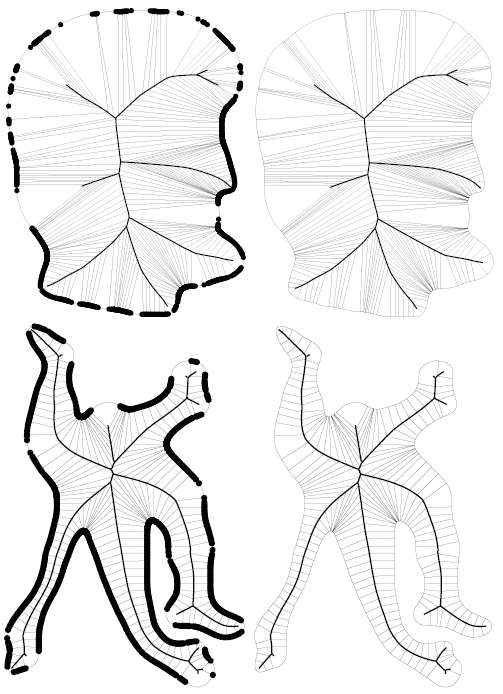| We
consider the average outward flux through a Jordan curve of the gradient
vector field of the Euclidean distance function to the boundary of a 2D
shape. Using an alternate form of the divergence theorem, we show that
in the limit as the area of the region enclosed by such a curve shrinks
to zero, this measure has very different behaviours at medial points
than at non-medial ones, providing a theoretical justification for its
use in the Hamilton-Jacobi skeletonization algorithm of [SBTZ].
We then specialize to the case of shrinking circular neighborhoods and
show that the average outward flux measure also reveals the object
angle at skeletal points. Hence, formulae for obtaining the boundary
curves, their curvatures, and other geometric quantities of interest,
can be written in terms of the average outward flux limit values at
skeletal points. Thus this measure can be viewed as a Euclidean
invariant for shape description: it can be used to both detect the
skeleton from the Euclidean distance function, as well as to explicitly
reconstruct the boundary from it. We illustrate our results with
several numerical simulations. |








